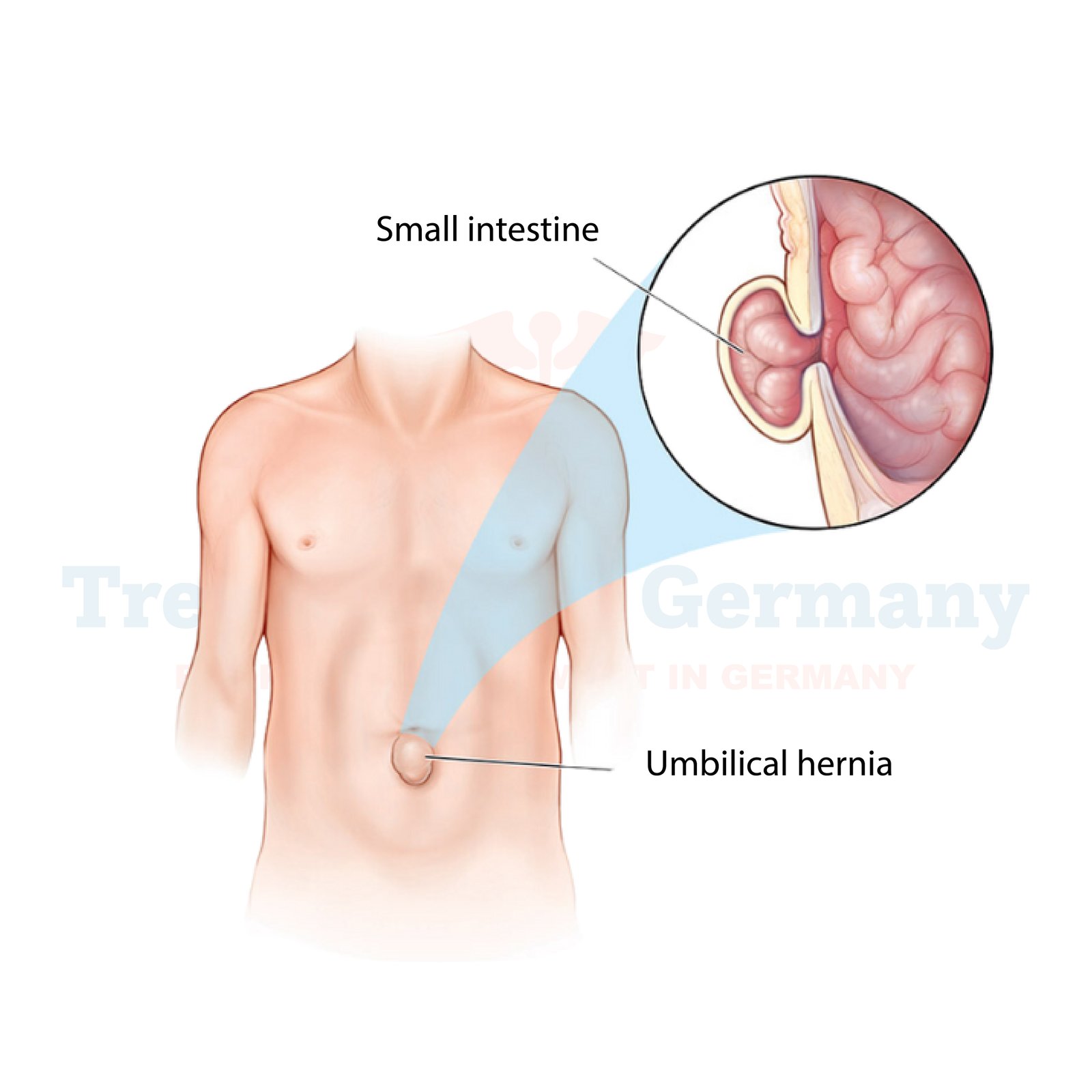What is an Umbilical Hernia?
An umbilical hernia occurs when a part of the intestine or abdominal tissue pushes through a weak spot in the abdominal wall near the belly button (umbilicus).
This condition is often noticeable as a bulge or swelling in the area around the belly button. Umbilical hernias are common in infants but can also affect adults, particularly those who are overweight or have had multiple pregnancies.
Side Effects of Umbilical Hernia
While some umbilical hernias may be asymptomatic, others can lead to various side effects, including:
- Discomfort or Pain: You may experience a dull ache or sharp pain, especially when coughing, lifting heavy objects, or straining.
- Bulge: A noticeable bulge or swelling at the belly button that may become more pronounced when standing or straining.
- Nausea or Vomiting: In some cases, if the hernia becomes incarcerated (trapped) or strangulated (cutting off blood supply), it can lead to nausea or vomiting.
- Understanding Umbilical Hernia: A Guide for Patients Seeking Treatment in Germany**
What is an Umbilical Hernia?
An umbilical hernia occurs when a part of the intestine or abdominal tissue pushes through a weak spot in the abdominal wall near the belly button (umbilicus). This condition is often noticeable as a bulge or swelling in the area around the belly button. Umbilical hernias are common in infants but can also affect adults, particularly those who are overweight or have had multiple pregnancies.
Side Effects of Umbilical Hernia
While some umbilical hernias may be asymptomatic, others can lead to various side effects, including:
- Discomfort or Pain: You may experience a dull ache or sharp pain, especially when coughing, lifting heavy objects, or straining.
- Bulge: A noticeable bulge or swelling at the belly button that may become more pronounced when standing or straining.
- Nausea or Vomiting: In some cases, if the hernia becomes incarcerated (trapped) or strangulated (cutting off blood supply), it can lead to nausea or vomiting.
- Incarceration: The hernia content becomes trapped, leading to discomfort and possible complications if not treated promptly.
- Strangulation: A severe complication where the blood supply to the herniated tissue is cut off, which can cause tissue death and requires immediate medical attention.
How is Umbilical Hernia Diagnosed?
Diagnosis of an umbilical hernia typically involves:
- Physical Examination: A doctor will conduct a physical exam, often asking you to cough or strain to check for the bulge.
- Medical History: Your doctor will review your medical history and discuss any symptoms you’re experiencing.
- Imaging Tests: In some cases, imaging tests such as an ultrasound or CT scan may be used to confirm the diagnosis and assess the size and contents of the hernia.
Potential Treatment of Umbilical Hernia
Treatment options for an umbilical hernia vary depending on the severity of the condition:
- Watchful Waiting: If the hernia is small and not causing significant symptoms, your doctor may recommend monitoring it regularly without immediate surgery.
- Surgical Repair: For larger hernias or those causing symptoms, surgery is often recommended. The procedure involves pushing the protruding tissue back into place and repairing the weakened area of the abdominal wall. This can be done through open surgery or minimally invasive laparoscopic surgery, depending on the case.
- Lifestyle Modifications: To help manage symptoms or prevent the hernia from worsening, your doctor might advise avoiding heavy lifting, losing excess weight, or making other lifestyle changes.
👉 Contact us for further information and receive acomplimentary consultation.

.webp)
.webp)
 (1).webp)
 (1).webp)

.webp)
.webp)
 (1).webp)
 (1).webp)
